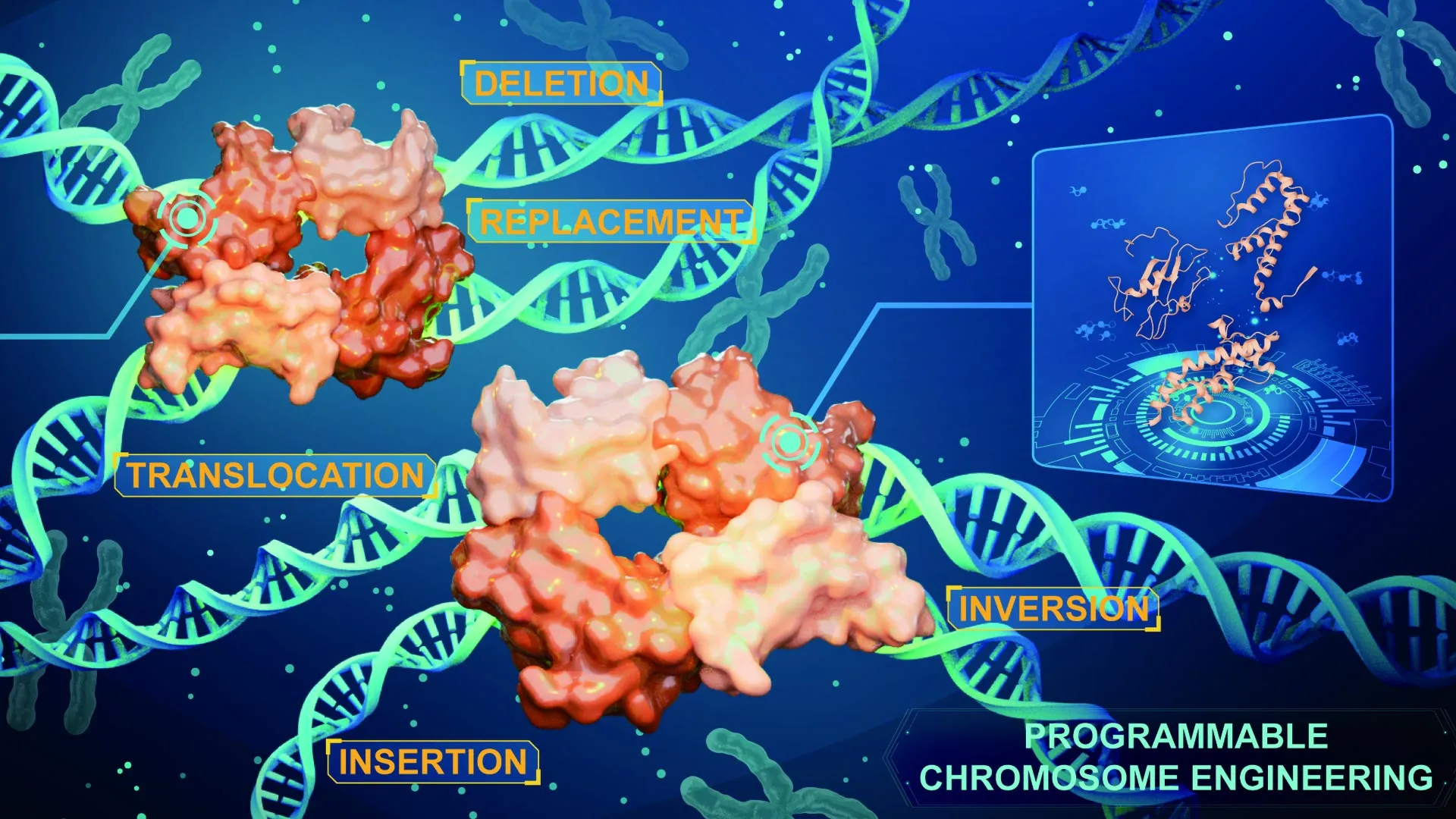Scientists just cracked the code to editing entire chromosomes flawlessly
- Date:
- August 5, 2025
- Source:
- Chinese Academy of Sciences Headquarters
- Summary:
- A group of Chinese scientists has created powerful new tools that allow them to edit large chunks of DNA with incredible accuracy—and without leaving any trace. Using a mix of advanced protein design, AI, and clever genetic tweaks, they’ve overcome major limitations in older gene editing methods. These tools can flip, remove, or insert massive pieces of genetic code in both plants and animals. To prove it works, they engineered rice that’s resistant to herbicides by flipping a huge section of its DNA—something that was nearly impossible before.
- Share:

A team of Chinese researchers led by Prof. GAO Caixia from the Institute of Genetics and Developmental Biology of the Chinese Academy of Sciences has developed two new genome editing technologies, known collectively as Programmable Chromosome Engineering (PCE) systems.
The study, published online in Cell on August 4, achieves multiple types of precise DNA manipulations ranging from kilobase to megabase scale in higher organisms, especially plants.
Extensive research has demonstrated the immense potential of the site-specific recombinase Cre-Lox system for precise chromosomal manipulation. However, its broader application has been hindered by three critical limitations:
- Reversible recombination reactions -- stemming from the inherent symmetry of Lox sites -- can negate desired edits.
- The tetrameric nature of Cre recombinase complicates engineering efforts, hindering activity optimization.
- Residual Lox sites after recombination may compromise editing precision.
The research team addressed each of these challenges and developed novel methods to advance the state of this technology. First, they built a high-throughput platform for rapid recombination site modification and proposed an asymmetric Lox site design. This led to the development of novel Lox variants that reduce reversible recombination activity by over 10-fold (approaching the background level of negative controls) while retaining high-efficiency forward recombination.
They then leveraged their recently developed AiCE (AI-informed Constraints for protein Engineering), model -- a protein-directed evolution system integrating general inverse folding models with structural and evolutionary constraints -- to develop AiCErec, a recombinase engineering method. This approach enabled precise optimization of Cre's multimerization interface, yielding an engineered variant with a recombination efficiency 3.5 times that of wild-type Cre.
Lastly, they designed and refined a scarless editing strategy for recombinases. By harnessing the high editing efficiency of prime editors, they developed Re-pegRNA, a method that uses specifically designed pegRNAs to perform re-prime editing on residual Lox sites, precisely replacing them with the original genomic sequence, thereby ensuring seamless genome modifications.
The integration of these three innovations led to the creation of two programmable platforms, PCE and RePCE. These platforms allow flexible programming of insertion positions and orientations for different Lox sites, enabling precise, scarless manipulation of DNA fragments ranging from kilobase to megabase scale in both plant and animal cells. Key achievements include: targeted integration of large DNA fragments up to 18.8 kb, complete replacement of 5-kb DNA sequences, chromosomal inversions spanning 12 Mb, chromosomal deletions of 4 Mb, and whole-chromosome translocations.
As a proof of concept, the researchers used this technology to create herbicide-resistant rice germplasm with a 315-kb precise inversion, showcasing its transformative potential for genetic engineering and crop improvement.
This pioneering work not only overcomes the historical limitations of the Cre-Lox system but also opens new avenues for precise genome engineering in a variety of organisms.
Story Source:
Materials provided by Chinese Academy of Sciences Headquarters. Note: Content may be edited for style and length.
Journal Reference:
- Chao Sun, Hongchao Li, Yijing Liu, Yunjia Li, Rui Gao, Xiaoli Shi, Hongyuan Fei, Jinxing Liu, Ronghong Liang, Caixia Gao. Iterative recombinase technologies for efficient and precise genome engineering across kilobase to megabase scales. Cell, 2025; DOI: 10.1016/j.cell.2025.07.011
Cite This Page: